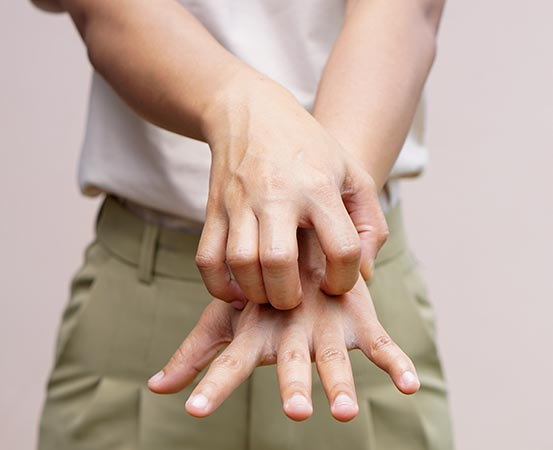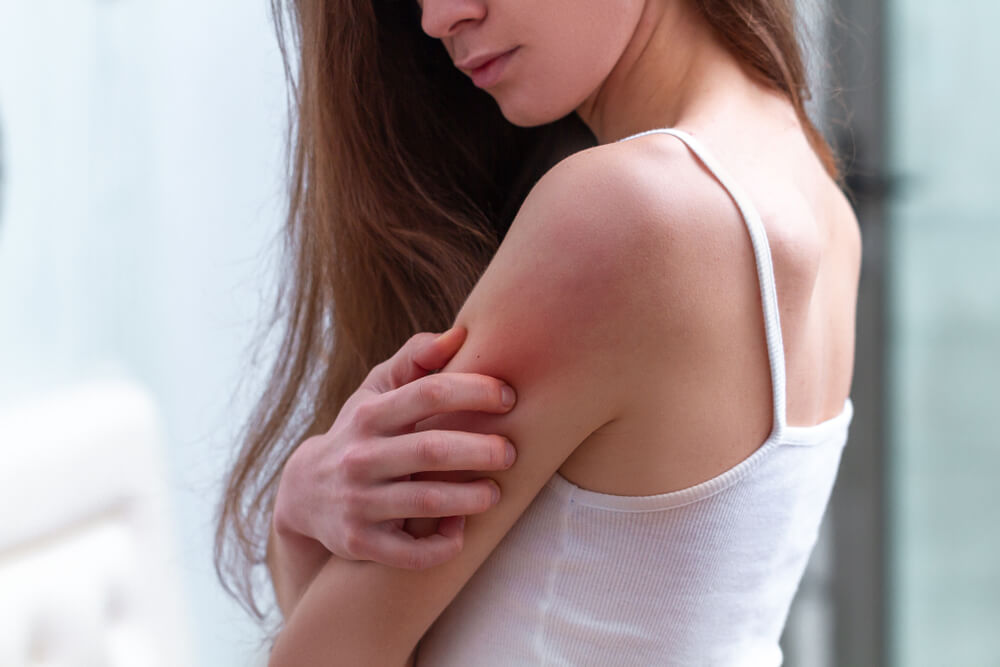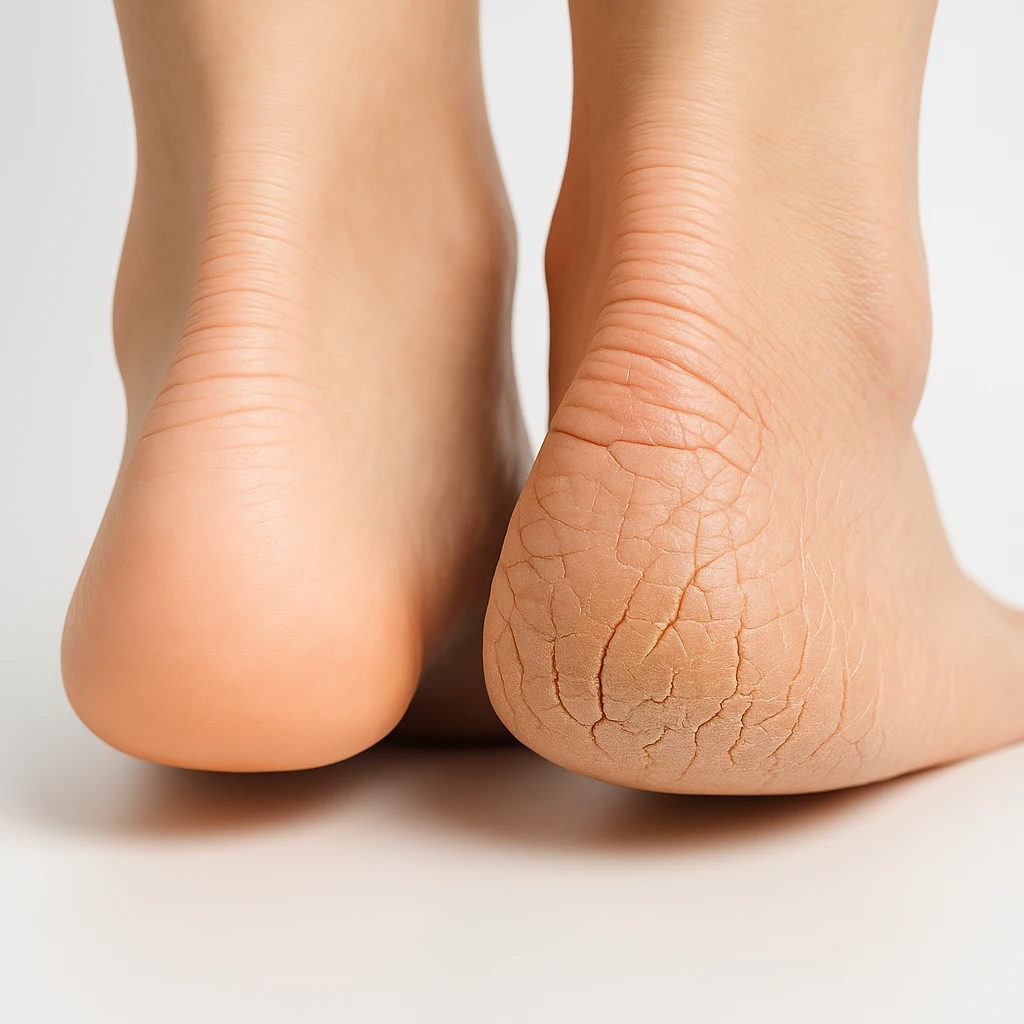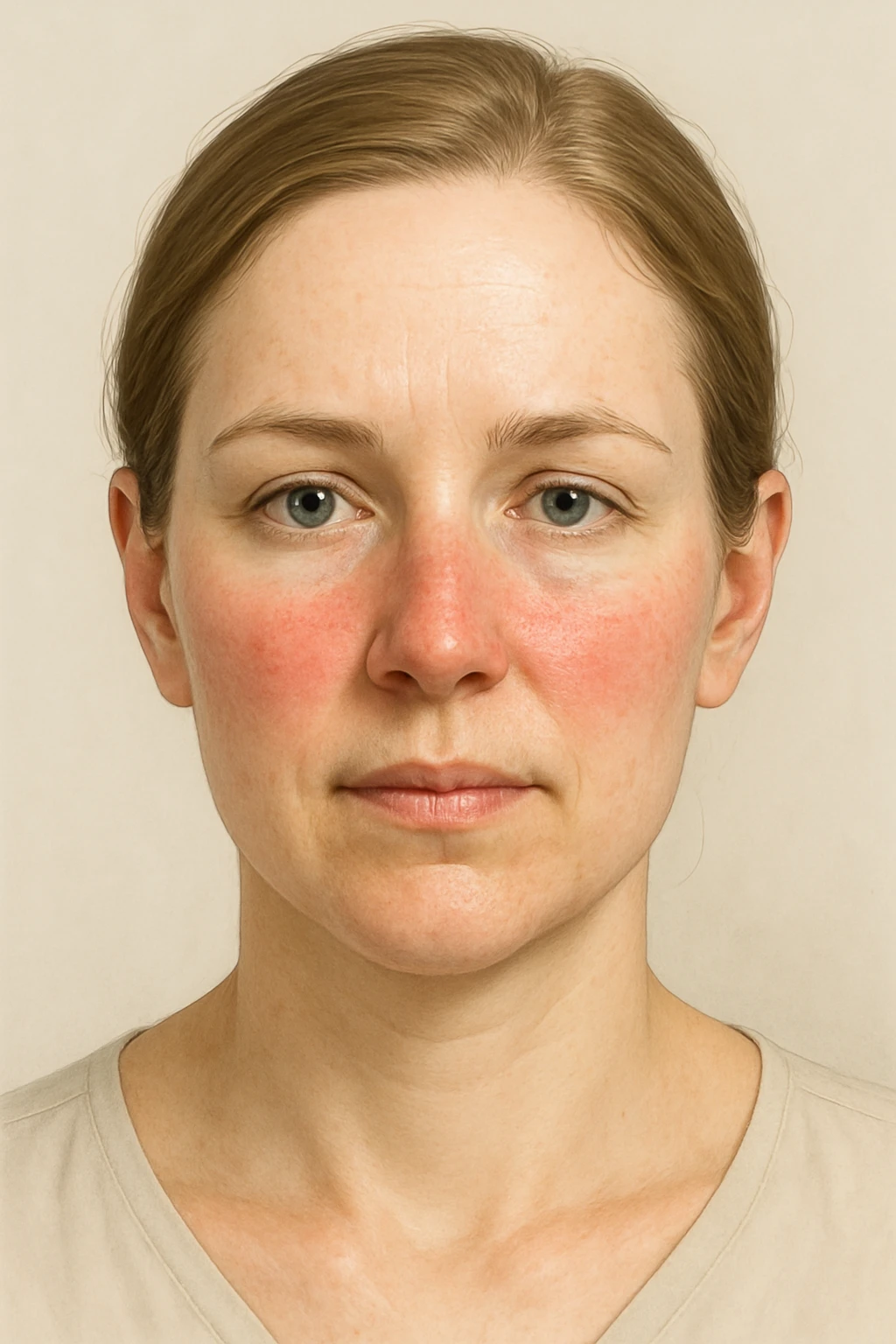Itchy Skin Without a Rash: Causes, Symptoms, and Relief Options
- Understanding Itchy Skin Without a Visible Rash
- Common Symptoms Associated with Invisible Itch
- The Role of Dry Skin and Environment
- Internal Medical Conditions That May Cause Itching
- Nerve-Related Itch: When the Problem Is Neurological
- Psychological and Emotional Triggers for Itch
- Hormonal Imbalances and Menopause-Related Itching
- Medication-Induced Itch Without Rash
- Itching Caused by Vitamin and Mineral Deficiencies
- When Itch Is Related to Liver or Kidney Dysfunction
- How Itching Can Be a Symptom of Blood or Immune Disorders
- Overview of Non-Rash Itching Causes and Their Features
- Itch That Gets Worse at Night: Nocturnal Pruritus
- Diagnosing Itch Without Skin Changes: What to Expect
- When and How to Treat at Home Safely
- Preventing Future Flare-Ups and Chronic Itch
- FAQ

Understanding Itchy Skin Without a Visible Rash
Itchy skin without a rash—also called pruritus sine materia—can be frustrating and perplexing. You feel the urge to scratch constantly, yet there’s no redness, bumps, or visible irritation. This condition may seem harmless at first, but persistent itching without explanation can point to underlying health issues that go far beyond the skin.
The causes range from nerve-related irritation and internal medical conditions, like thyroid disorders or kidney problems, to psychological stress or dry environmental conditions. Because no rash is visible, the condition is often dismissed as minor—when in fact, it may be the body’s subtle signal of a deeper imbalance.
Much like unexplained pain or pressure in lower back pain while sleeping, skin itching without a clear trigger requires a broader, more systemic look to uncover and treat the root cause.
Common Symptoms Associated with Invisible Itch
Even without a rash, itching can be localized or widespread, intermittent or constant, and mild or intense. The sensation might feel like crawling, tingling, pinpricks, or even burning—especially at night or after bathing. You might notice temporary marks from scratching, but the skin itself appears normal to the eye.
The most common areas affected include the arms, legs, scalp, and back, although it can appear anywhere. Nighttime itching is particularly disruptive because body temperature naturally increases during rest, potentially amplifying skin sensitivity—similar to how some people experience symptom spikes in chronic plantar fasciitis after prolonged stillness.
Persistent scratching can eventually lead to visible signs like thickened skin (lichenification), tiny scabs, or pigmentation changes, even though the original trigger was invisible.
The Role of Dry Skin and Environment
One of the most frequent and benign causes of itch without a rash is xerosis—excessively dry skin. This condition is especially common during winter months or in low-humidity environments where indoor heating is used extensively. As skin loses moisture, it becomes less supple, leading to micro-cracks and heightened nerve sensitivity.
This type of itch usually improves with consistent moisturization using fragrance-free emollients. However, if not addressed early, it can lead to secondary conditions like eczema or skin infections due to scratching.
Maintaining indoor humidity levels and using mild, pH-balanced soaps can go a long way in protecting the skin barrier. This is similar to how breathing moist air helps relieve throat irritation in cases of phlegm buildup without illness. In both cases, maintaining internal hydration and external moisture are key.

Internal Medical Conditions That May Cause Itching
When dry skin and allergies are ruled out, unexplained itch without a rash may stem from internal imbalances or disease. Several systemic conditions are known to cause itch as a primary symptom, long before any rash appears—or in some cases, without any skin change at all.
- Liver disease, particularly cholestasis, leads to bile salt accumulation in the bloodstream, irritating nerve endings in the skin.
- Kidney disease, especially in late stages, causes uremic pruritus due to toxin buildup.
- Thyroid dysfunction, both hypo- and hyperthyroidism, can disrupt the skin’s hydration and nervous signaling, resulting in persistent itch.
- Diabetes can lead to poor circulation and neuropathy, creating abnormal skin sensations like itching.
When itching persists for weeks and doesn’t respond to topical care, it’s essential to consider a medical evaluation, particularly if accompanied by fatigue, weight changes, or changes in urine or stool.
Nerve-Related Itch: When the Problem Is Neurological
Not all itch is skin-deep. In some cases, the sensation arises from nerve dysfunction, either in the peripheral nerves (those that carry signals from skin to brain) or in the central nervous system itself. This is called neuropathic itch, and it often feels different from histamine-related itching—it may be deeper, more intense, and harder to relieve through scratching.
Examples include postherpetic neuralgia (itch after shingles), multiple sclerosis, and pinched nerves in the spine or neck. These conditions can send abnormal signals to the brain, making the skin feel itchy even though there’s no external trigger. Itch may also be localized to a very specific area, such as the forearm or shoulder, with no redness or swelling.
Managing this type of itch often requires nerve-calming medications or physical therapy. In some cases, it overlaps with other forms of chronic nerve irritation—similar to how posture or alignment affects nerve pathways in conditions like lower back pain during sleep.

Psychological and Emotional Triggers for Itch
There’s a strong link between mental health and skin sensation. Anxiety, stress, and even depression can manifest physically as itching, even when the skin looks completely normal. This phenomenon is often called psychogenic pruritus, and it’s surprisingly common.
People may notice itch flare-ups during stressful periods, emotional upheaval, or after anxiety-provoking events. The nervous system becomes hyper-alert, and even minor signals from the skin are amplified and misinterpreted as itch. This can quickly turn into a self-reinforcing loop, where stress causes itch, and itching worsens stress.
Approaches like mindfulness, breathwork, progressive muscle relaxation, and regular sleep hygiene have been shown to help. These are the same strategies often recommended for natural anxiety reduction, and they serve dual purposes in restoring both skin and mental balance.
Hormonal Imbalances and Menopause-Related Itching
Hormonal shifts—especially those related to estrogen and progesterone levels—can alter skin physiology in significant ways. During menopause, for example, estrogen levels drop, leading to thinner, drier, and more irritable skin, even without visible changes.
Many women report new or worsening itch in areas like the neck, arms, and lower legs during perimenopause and beyond. This isn’t due to a rash, but rather the loss of skin elasticity and moisture, compounded by changes in nerve perception.
Treating hormonal itch may include topical estrogen creams, moisturizing oils, or dietary support that encourages hormone balance. Just as hormonal shifts affect ligament strength in joint conditions like plantar fasciitis, they can just as easily disrupt skin homeostasis.
Medication-Induced Itch Without Rash
Sometimes, the very medications meant to treat a condition can produce unexplained itching as a side effect. This is more common with certain blood pressure medications (like ACE inhibitors), opioids, antibiotics, and chemotherapy drugs. The itch may begin shortly after starting the drug or after a dosage change, and typically there’s no visible rash, making it easy to overlook.
In some cases, medications interfere with histamine pathways or liver detoxification, both of which can trigger itchiness. Other times, they affect the skin’s hydration or its nerve endings directly.
If you suspect your medication may be causing itch, do not stop it abruptly—consult your healthcare provider to evaluate alternatives or supportive measures. You may be able to reduce symptoms through hydration, moisturizers, or antihistamines while continuing the treatment.

Itching Caused by Vitamin and Mineral Deficiencies
A surprisingly common and often overlooked cause of invisible itching is a deficiency in certain vitamins or minerals, particularly vitamin B12, iron, and magnesium. These nutrients play critical roles in skin health, nerve function, and hydration. When levels fall too low, the result may be subtle sensations like tingling, burning, or itchiness without a rash.
Magnesium deficiency, for instance, can lead to neuromuscular symptoms, including itching, muscle twitches, and restlessness, especially at night. The skin may appear completely normal, but the sensation can be persistent and uncomfortable.
Blood tests can help determine if nutritional imbalances are present. Replenishing deficiencies through food or targeted supplementation often brings relief, especially when combined with lifestyle changes. For more detailed insight, you can refer to our article on the symptoms of magnesium deficiency in the body.
When Itch Is Related to Liver or Kidney Dysfunction
The liver and kidneys are two of the body’s primary detoxification organs. When they are not functioning optimally, metabolic waste can accumulate in the bloodstream, leading to systemic itching. This kind of itch tends to be widespread, worst at night, and often has no accompanying rash.
In cholestasis, where bile flow is blocked or reduced, bile salts seep into the bloodstream and irritate skin nerves. Similarly, people with advanced kidney disease may develop uremic pruritus, often focused on the back, arms, or scalp.
Because these are internal conditions, the itch won’t improve with creams or lotions. Instead, the treatment requires addressing the root issue, often through medical care, diet changes, or dialysis in advanced kidney disease. It’s important to recognize when skin symptoms are a mirror of internal organ distress.
How Itching Can Be a Symptom of Blood or Immune Disorders
In rare cases, generalized itch without rash may be a sign of hematologic or immune-related disorders, such as Hodgkin’s lymphoma, polycythemia vera, or autoimmune diseases like lupus. In these cases, the itch tends to be deep, relentless, and unresponsive to topical treatments.
With Hodgkin’s lymphoma, for example, itch may precede any visible signs of cancer by months. The mechanism isn’t fully understood but is believed to involve cytokines and inflammatory markers that irritate skin nerves.
If the itch is accompanied by symptoms like night sweats, unexplained weight loss, or fatigue, it should prompt immediate medical investigation. While rare, these cases underscore the importance of not dismissing persistent invisible itching as trivial.
Overview of Non-Rash Itching Causes and Their Features
Below is a comparison of the most common causes of itching without visible rash and how they typically present:
| Cause | Key Features | Common Areas Affected | Responds To |
| Dry skin (xerosis) | Flaky, tight skin, worse in winter | Legs, arms, back | Moisturizers, humidity control |
| Magnesium or vitamin deficiency | Tingling, crawling itch, especially at night | Legs, arms, back, scalp | Dietary changes, supplements |
| Liver/kidney dysfunction | Deep, persistent itch, worse at night | Generalized or on back/scalp | Medical treatment of organ condition |
| Nerve-related (neuropathic) | Localized, electric or burning sensation | One-sided patches or limbs | Nerve-stabilizing medication, physical therapy |
| Hormonal (menopause) | Dry, fragile skin, no rash | Neck, chest, limbs | Hormonal support, emollients |
| Psychogenic | Stress-related, worsens during anxiety episodes | Scalp, arms, torso | Relaxation, anxiety reduction techniques |
Itch That Gets Worse at Night: Nocturnal Pruritus
Many people notice that itching becomes far more intense during the evening or nighttime. This isn’t coincidental—it’s tied to the body’s natural circadian rhythms. At night, your core temperature rises slightly, blood flow to the skin increases, and cortisol (your body’s anti-inflammatory hormone) drops. These changes can amplify itch sensations, especially if the cause is internal.
Nocturnal itch is especially disruptive to sleep, affecting both physical comfort and emotional regulation. Sleep loss itself can make the nervous system more reactive, creating a vicious cycle. People with invisible itching often find the nights most difficult, and recovery can be hindered by fatigue or stress.
Supportive tools like cool bedding, evening moisturizers, herbal teas, or white noise can help manage these flares. Much like managing conditions such as lower back pain at night, creating a sleep environment that reduces aggravation is part of comprehensive symptom control.
Diagnosing Itch Without Skin Changes: What to Expect
When you see a doctor about itching without a rash, the process usually begins with a comprehensive medical history, followed by a physical exam and lab tests. Bloodwork may include a complete blood count, liver and kidney panels, thyroid testing, glucose levels, and possibly vitamin or mineral analysis.
A review of medications, recent life changes, stress levels, and diet is also important. If standard workups are inconclusive, more specialized tests may be done: nerve conduction studies, skin biopsies, or referrals to dermatologists or neurologists.
Getting a diagnosis for itch without a rash takes time and collaboration, but understanding the deeper triggers can dramatically improve outcomes and guide treatment decisions that actually work.
When and How to Treat at Home Safely
Many cases of unexplained itching can be safely managed at home, particularly if symptoms are mild, intermittent, or clearly related to environmental or lifestyle factors. First, identify and remove any obvious triggers like scented detergents, hot showers, or tight clothing.
Next, build a routine around hydration, barrier-friendly skincare, and stress management. Use unscented moisturizers, stay hydrated throughout the day, and incorporate calming rituals like herbal teas, deep breathing, or warm (not hot) baths.
However, if symptoms persist for more than two weeks, worsen, or start affecting your sleep or daily life, it’s best to seek medical advice. Just like with throat phlegm without infection, what seems manageable at first can evolve into something chronic if ignored.
Preventing Future Flare-Ups and Chronic Itch
Once the itch is under control, your focus shifts to prevention. Daily habits can make all the difference. Avoid over-washing, especially with hot water or strong soaps. Moisturize after every shower. Use cool cotton clothing, especially in bed. Keep your room humidity between 40–60% to avoid skin dehydration.
Support your nervous system through sleep, gentle movement, and emotional regulation. If your itch has neurological or systemic origins, this type of consistent, non-invasive self-care becomes even more essential—just as it does when managing flare-ups of conditions like plantar fasciitis.
Preventing chronic itch isn’t about one big solution—it’s about layering small choices every day that reinforce skin balance, immune calm, and nervous system resilience.
FAQ
What could cause itching if there’s no visible rash?
There are many possible causes of itch without a rash, ranging from simple dry skin to more complex internal conditions. These include vitamin or mineral deficiencies, nerve irritation, hormonal changes, medication side effects, and systemic issues like liver or kidney problems. In some cases, the nerves misfire, sending itch signals to the brain even though there’s no damage or inflammation on the skin’s surface.
Why is the itching worse at night?
Your body’s circadian rhythm affects how you experience itch. At night, your skin gets warmer, cortisol levels drop, and your nervous system becomes more reactive—all of which increase sensitivity. For people with invisible itching, this nighttime intensification can become the most frustrating part of the experience and is a strong clue that the cause may be internal.
Can anxiety or stress really cause itch without rash?
Yes. The brain and skin are closely linked through what’s called the neuro-immuno-cutaneous system. Stress increases inflammation and makes nerve endings more reactive, which can create itching without visible signs. This is called psychogenic itch, and it often responds well to calming practices like breathing exercises, journaling, or natural anxiety reduction techniques.
Is it dangerous to ignore persistent itching with no rash?
It can be. While some cases are harmless, persistent itch—especially if it lasts more than two weeks or interferes with sleep—can be a sign of underlying medical problems like liver dysfunction, kidney issues, thyroid imbalance, or even blood disorders. Getting checked by a doctor is a wise step if symptoms linger or worsen.
Can vitamin deficiencies cause itching without skin changes?
Absolutely. Deficiencies in magnesium, vitamin B12, and iron can all cause sensory nerve issues that lead to tingling, burning, or itch without rash. Low magnesium, in particular, is known to cause nighttime restlessness and neuromuscular symptoms. Our article on magnesium deficiency symptoms explores this in more detail.
How do I know if my itching is nerve-related?
Nerve-related itch (neuropathic pruritus) often feels deeper than surface itch, is very localized, and might come with tingling or burning sensations. Scratching usually doesn’t help. It might affect one specific area—like the shoulder, wrist, or back—and often comes without any visible skin change.
Can menopause cause itch without rash?
Yes, particularly due to lower estrogen levels, which reduce skin moisture and collagen. This leads to thin, dry, and more sensitive skin—even without a rash. Many women in perimenopause and beyond report a crawling or prickling sensation, especially on the neck, arms, or chest.
What medical tests help diagnose invisible itching?
A doctor may order blood tests (CBC, liver/kidney panels, thyroid function), vitamin panels, and possibly imaging if a neurological cause is suspected. In some cases, skin biopsies or nerve studies are needed. A full medication review is also important, as many prescriptions can have itching as a side effect.
Can itching without rash be a side effect of medication?
Yes. Drugs like ACE inhibitors, opioids, antibiotics, and chemotherapy agents are known to cause itching without rash in some people. It may start shortly after beginning a new medication or may build up over time. Always consult your doctor before stopping or switching meds.
What’s the best way to relieve nighttime itch?
Try taking a lukewarm shower, moisturizing with a fragrance-free emollient, and keeping your room cool and humidified. Use lightweight bedding and consider antihistamines if advised by a doctor. These strategies, similar to those used for managing phlegm at night, can reduce the intensity of sensations that worsen during sleep.
Are there natural remedies that help with invisible itch?
Yes. Oatmeal baths, coconut oil, calendula creams, and magnesium-rich foods (like pumpkin seeds and leafy greens) can soothe the skin and calm the nerves. Herbal teas like chamomile or lemon balm may help with both stress and itch, especially before bed.
Is itchy skin without rash related to blood sugar or diabetes?
It can be. High blood sugar levels over time damage small nerves (peripheral neuropathy), leading to itching, tingling, or burning sensations—especially in the lower legs, feet, and hands. If you notice unexplained itch alongside frequent urination or fatigue, screening for blood sugar is recommended.
Why does scratching make it worse when there’s nothing there?
Scratching releases histamine and inflammatory chemicals, which can actually worsen itch in the long run. It can also create microtears in the skin, leading to irritation or infection. Gentle pressure, cold compresses, or distraction techniques often work better than scratching.
Can autoimmune diseases cause itching without a rash?
Yes. Autoimmune conditions like lupus, Sjögren’s syndrome, or celiac disease can produce systemic inflammation that irritates nerve endings or affects liver function—both of which can cause itch without a visible rash. Fatigue, joint pain, or dry eyes may accompany the itching in these cases.
What lifestyle habits can prevent chronic invisible itch?
The most effective habits include hydrating regularly, using gentle cleansers, wearing breathable fabrics, avoiding extreme heat or long hot showers, and supporting nerve health with sleep and stress balance. These daily practices are just as essential for long-term management as they are in conditions like plantar fasciitis, where consistent self-care prevents flare-ups.












